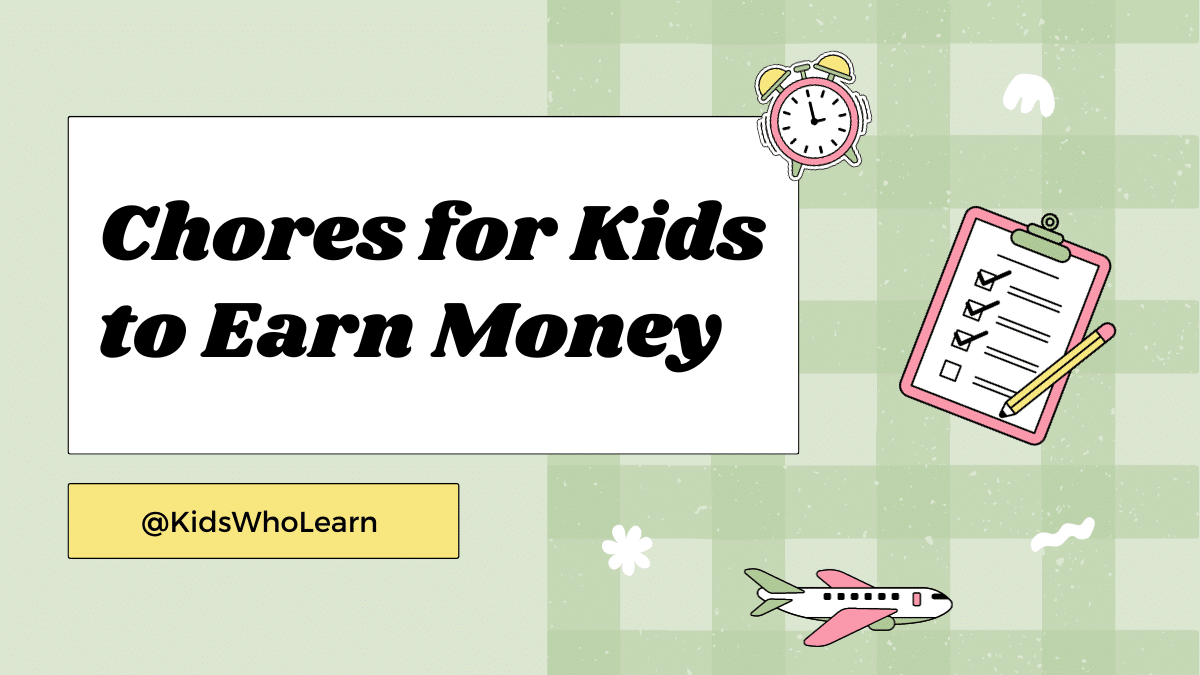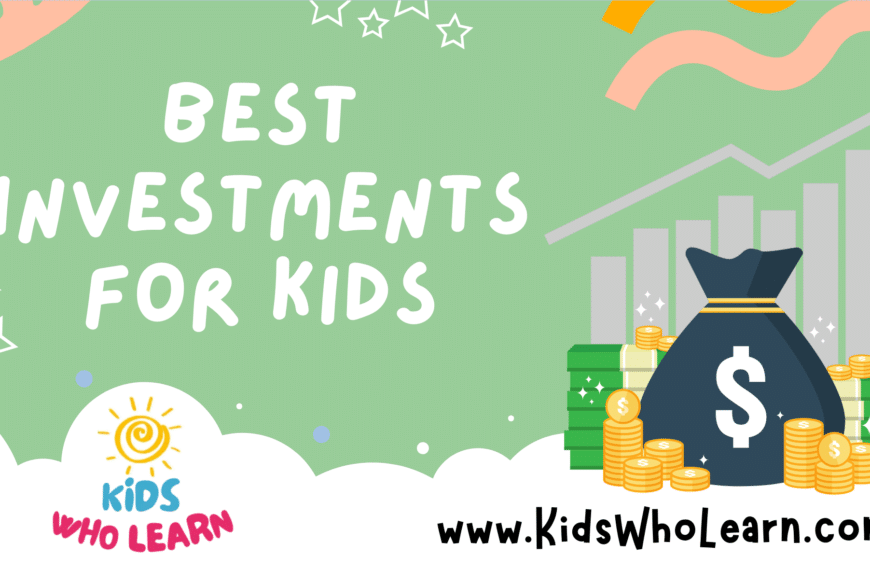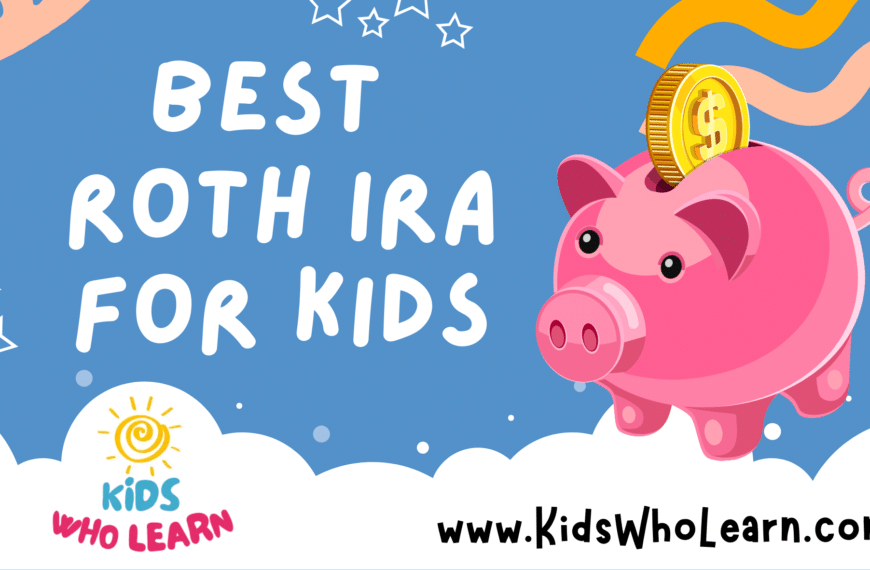Teaching kids about money is an important life skill that will benefit them throughout their lives. By teaching kids about money, you can help them develop good financial habits and prepare them for the future. Many parents struggle with how to teach kids about money, but it doesn’t have to be difficult.
One of the first steps to teaching kids about money is helping them understand what money is and how it works. This can include teaching them about different types of money, such as coins and bills, and explaining how money is used to buy things. It can also involve discussing the value of money and how it can be earned.
Another important aspect of teaching kids about money is helping them learn how to earn money. This can include setting up a system for allowance or encouraging kids to do chores or start a small business. By teaching kids about earning money, you can help them develop a strong work ethic and a sense of responsibility.
Key Takeaways
- Understanding what money is and how it works is an important first step in teaching kids about money.
- Helping kids learn how to earn money can teach them important life skills and develop a strong work ethic.
- Incorporating money lessons into daily life can help reinforce good financial habits and prepare kids for the future.
Understanding Money
What is Money?
Money is a tool that we use to buy goods and services. It comes in different forms, such as coins, bills, and credit cards. Money has value because people agree to use it as a medium of exchange.
It’s important to teach kids about the different forms of money and how to use them. You can start by introducing them to coins and bills and explaining their value. Teach them how to count money and make change.
The Value of Money
Money has value because it can be used to buy things that we need and want. It’s important for kids to understand that money doesn’t grow on trees and that we have to work to earn it.
Teach your kids about the value of money by setting up a savings account for them. Encourage them to save money and explain how saving can help them reach their goals. You can also teach them about budgeting by giving them a set amount of money and having them decide how to spend it.
In conclusion, understanding money is an important life skill that kids should learn at a young age. By teaching them about the different forms of money and the value of money, you can help them develop good money habits that will benefit them in the future.
Earning Money
Teaching kids about money is an important life skill. One of the first things you can teach them is how to earn money. Here are two ways to help your child earn money:
Chores and Allowance
Giving your child an allowance in exchange for completing household chores is a common way to teach them about earning money. This method teaches them the value of hard work and responsibility. Here are some tips to make it work:
- Set clear expectations for the chores and the amount of money they will receive.
- Choose age-appropriate chores that your child can handle.
- Be consistent with paying the allowance on a regular schedule.
- Use a chart or a list to keep track of the chores and payments.
Junior Jobs
Another way to help your child earn money is by finding a job that is suitable for their age. This method teaches them about the real world and the value of earning money through work. Here are some ideas for junior jobs:
- Pet-sitting or dog-walking for neighbors or friends.
- Yard work, such as raking leaves or mowing lawns.
- Babysitting for younger siblings or family friends.
- Selling homemade crafts or baked goods.
Encourage your child to be creative and find a job that they enjoy. Remember to supervise them and help them stay safe while working.
Teaching your child about earning money can be a fun and rewarding experience for both of you. By using these methods, you can help your child learn the value of hard work and responsibility while also giving them the opportunity to earn money.
Saving Money
Teaching your kids the importance of saving money is an essential life skill that will benefit them in the long run. It is essential to teach them how to save money from an early age so that they can develop good habits that will help them manage their finances effectively in the future.
Importance of Saving
Saving money is crucial because it enables you to have a safety net in case of emergencies. It also allows you to achieve long-term financial goals, such as buying a house, paying for college, or starting a business. Saving money helps you to be financially independent and secure.
Teaching your kids about the importance of saving money can be fun and engaging. You can start by setting a good example by saving money yourself and involving them in the process. For example, you can encourage them to save a portion of their allowance or earnings from chores.
Setting Savings Goals
Setting savings goals is an excellent way to help your kids develop a savings habit. It is important to teach them how to set realistic goals and work towards achieving them. You can help them identify what they want to save for, such as a new toy or a trip to a theme park.
Once they have identified their savings goal, you can help them create a savings plan. Encourage them to save a certain amount of money each week or month and track their progress towards their goal. You can also offer incentives to motivate them to save, such as matching their savings or rewarding them when they reach their goal.
Teaching your kids about saving money is an important life skill that will benefit them in the long run. By setting a good example and helping them develop good habits, you can help them achieve financial independence and security.
Spending Money Wisely
Teaching kids about money management is an essential life skill that can help them make smart financial decisions in the future. One of the most important lessons to teach them is how to spend their money wisely. Here are some tips to help your child learn how to make smart spending choices.
Needs vs Wants
It’s important to teach your child the difference between needs and wants. Needs are things that are necessary for survival, such as food, clothing, and shelter. Wants are things that are nice to have but are not essential. Encourage your child to prioritize their spending based on their needs first and then their wants.
Budgeting Basics
Teaching your child how to budget is another crucial lesson in spending money wisely. Start by helping them create a budget that includes their income and expenses. Encourage them to track their spending and adjust their budget as necessary.
Here are some budgeting basics to teach your child:
- Start by setting a goal for saving a portion of their income
- Prioritize their spending based on needs first and then wants
- Encourage them to comparison shop and look for deals before making a purchase
- Teach them to avoid impulse buying
- Help them understand the importance of saving for unexpected expenses
By teaching your child these basic budgeting skills, you can help them develop good spending habits that will last a lifetime.
Giving and Charity
Teaching kids about giving and charity is an important part of their financial education. It helps them understand the value of money and how it can be used to help others. Here are some tips to help you teach your kids about giving and charity:
Start with Small Acts of Kindness
Encourage your kids to perform small acts of kindness, such as helping a neighbor or donating toys to a charity. This will help them understand the importance of giving and how even small acts can make a big difference.
Teach Them about Charitable Organizations
There are many charitable organizations that help people in need. Teach your kids about these organizations and the work they do. You can also involve them in fundraising events or volunteer activities.
Set an Example
Kids learn by example, so make sure you set a good one. Show your kids that you value giving and charity by donating your time or money to a cause you care about.
Create a Giving Plan
Help your kids create a giving plan. This can include setting aside a portion of their allowance to donate to a charity or deciding on a cause they want to support. This will help them develop a habit of giving and make it a regular part of their financial planning.
Discuss the Impact of Giving
Talk to your kids about the impact of giving. Help them understand how their donations can make a difference in someone’s life. This will help them feel good about giving and encourage them to continue to do so in the future.
Teaching your kids about giving and charity is an important part of their financial education. By starting small, setting a good example, and discussing the impact of giving, you can help your kids develop a habit of giving that will benefit them and others for years to come.
Banking Basics for Kids
Teaching kids about banking is an important part of helping them understand money management. By introducing them to the basics of banking, you can help them develop good financial habits that will last a lifetime.
Checking Accounts
A checking account is a type of bank account that allows you to deposit and withdraw money as needed. It’s a great way to teach kids about managing their money in a safe and secure way. Here are some tips for teaching kids about checking accounts:
- Explain how checking accounts work: A checking account is a safe place to keep your money. You can deposit money into your account, and then use a debit card or checks to withdraw money when you need it.
- Show them how to keep track of their balance: It’s important to keep track of how much money you have in your account. Teach your child how to check their balance online or at an ATM.
- Discuss fees: Some checking accounts have fees for things like overdrafts or using an out-of-network ATM. Make sure your child understands these fees and how to avoid them.
Savings Accounts
A savings account is a type of bank account that helps you save money over time. By teaching your child about savings accounts, you can help them develop good saving habits. Here are some tips for teaching kids about savings accounts:
- Explain how savings accounts work: A savings account is a safe place to keep your money and earn interest. You deposit money into your account, and over time, your money grows.
- Show them how to set savings goals: Help your child set savings goals, like saving for a new toy or a special trip. This will help them stay motivated to save money.
- Discuss compound interest: When you have money in a savings account, you earn interest on your balance. Over time, this interest can add up and help your money grow even faster. Make sure your child understands how compound interest works.
By teaching your child about checking and savings accounts, you can help them develop good financial habits that will last a lifetime.
Teaching About Credit and Debt
Teaching children about credit and debt is an important part of their financial education. Here are some tips to help you teach your kids about these concepts:
Explain What Credit Is
Credit is when you borrow money with the promise to pay it back later, usually with interest. It’s important to explain to your kids that credit is not free money, and that they will have to pay back what they borrow, plus interest.
Teach Them About Interest
Interest is the cost of borrowing money. It’s important to explain to your kids that the longer they take to pay back what they borrowed, the more interest they will have to pay. You can use examples to help them understand how interest works, such as credit card statements or car loans.
Show Them How to Use Credit Responsibly
It’s important to teach your kids how to use credit responsibly. This means only borrowing what they can afford to pay back, making payments on time, and not using credit to buy things they don’t need. You can also explain how having good credit can help them in the future, such as when they want to buy a car or a house.
Discuss the Dangers of Debt
Debt can be dangerous if it’s not managed properly. It’s important to explain to your kids that if they borrow too much money, they may not be able to pay it back, which can lead to financial problems. You can also discuss the consequences of having bad credit, such as difficulty getting approved for loans or credit cards.
Teach Them to Budget
Finally, it’s important to teach your kids how to budget. This means creating a plan for how they will spend their money, including how much they will save and how much they will spend on things like entertainment and clothes. By teaching your kids to budget, you can help them avoid overspending and getting into debt.
Incorporating Money Lessons in Daily Life
Teaching kids about money doesn’t have to be a formal lesson. You can incorporate money lessons in daily life to make it more engaging and practical. Here are some simple ways to do so:
- Grocery shopping: Take your kids grocery shopping with you and involve them in the process. Give them a budget and let them choose some items within that budget. This will teach them about the value of money and how to make smart choices.
- Allowance: Consider giving your kids an allowance and teaching them how to budget it. Encourage them to save a portion of their allowance for a bigger purchase they want in the future.
- Savings jar: Create a savings jar with your kids and encourage them to save their spare change. This will teach them the importance of saving and how small amounts can add up over time.
- Online banking: Show your kids how to use online banking to check their account balance and track their spending. This will teach them how to manage their money digitally, which is an essential skill in today’s world.
- Charitable giving: Encourage your kids to donate a portion of their allowance or savings to a charity of their choice. This will teach them about the importance of giving back and being socially responsible.
Incorporating money lessons in daily life can be fun and practical. By doing so, you can help your kids develop healthy money habits that will benefit them for a lifetime.
Conclusion
Teaching kids about money is an essential life skill that can help them make informed decisions about their finances in the future. By starting early and making it fun, you can help your kids develop good money habits that will last a lifetime.
Remember to keep it simple and age-appropriate. Start with the basics, such as the value of money and how to count it. As your child grows, introduce more complex concepts, such as budgeting and saving.
Encourage your child to set financial goals and reward them for their achievements. This will help them develop a positive attitude towards money and motivate them to save for the things they want.
Finally, be a good role model. Kids learn by example, so make sure you practice what you preach. Show your child how to save, budget, and make wise financial decisions. With your guidance and support, your child can become financially savvy and confident.
Frequently Asked Questions
What are some fun games or activities to teach kids about money?
There are many fun games and activities that can help kids learn about money. For example, you can play “store” with your kids and use play money to teach them about spending and saving. You can also create a budgeting game where your kids have to plan and manage their own imaginary finances. Board games like Monopoly can also be a great way to teach kids about money.
What are some age-appropriate ways to teach kids about money?
The best way to teach kids about money is to start early and keep it age-appropriate. For younger kids, you can use games and activities to teach basic concepts like counting and saving. As kids get older, you can introduce more complex topics like budgeting and investing.
What are the benefits of teaching kids about money at a young age?
Teaching kids about money at a young age can have many benefits. Kids who learn about money early are more likely to develop good financial habits and make smart financial decisions later in life. They are also more likely to be financially independent and successful.
How can parents incorporate money lessons into everyday activities?
There are many ways that parents can incorporate money lessons into everyday activities. For example, you can use grocery shopping as an opportunity to teach your kids about budgeting and comparison shopping. You can also involve your kids in household finances by giving them an allowance and encouraging them to save and budget their money.
What are some common mistakes to avoid when teaching kids about money?
One common mistake is to shield kids from financial realities. It’s important to be honest with your kids about money and involve them in family finances. Another mistake is to focus too much on the negative aspects of money, like debt and bills. Instead, focus on the positive aspects of saving and investing.
What resources are available for teaching kids about money?
There are many resources available for teaching kids about money, including books, websites, and apps. Some popular resources include “The Berenstain Bears’ Trouble with Money,” the website Kids.gov, and the app “PiggyBot.” It’s important to choose resources that are age-appropriate and engaging for your kids.







